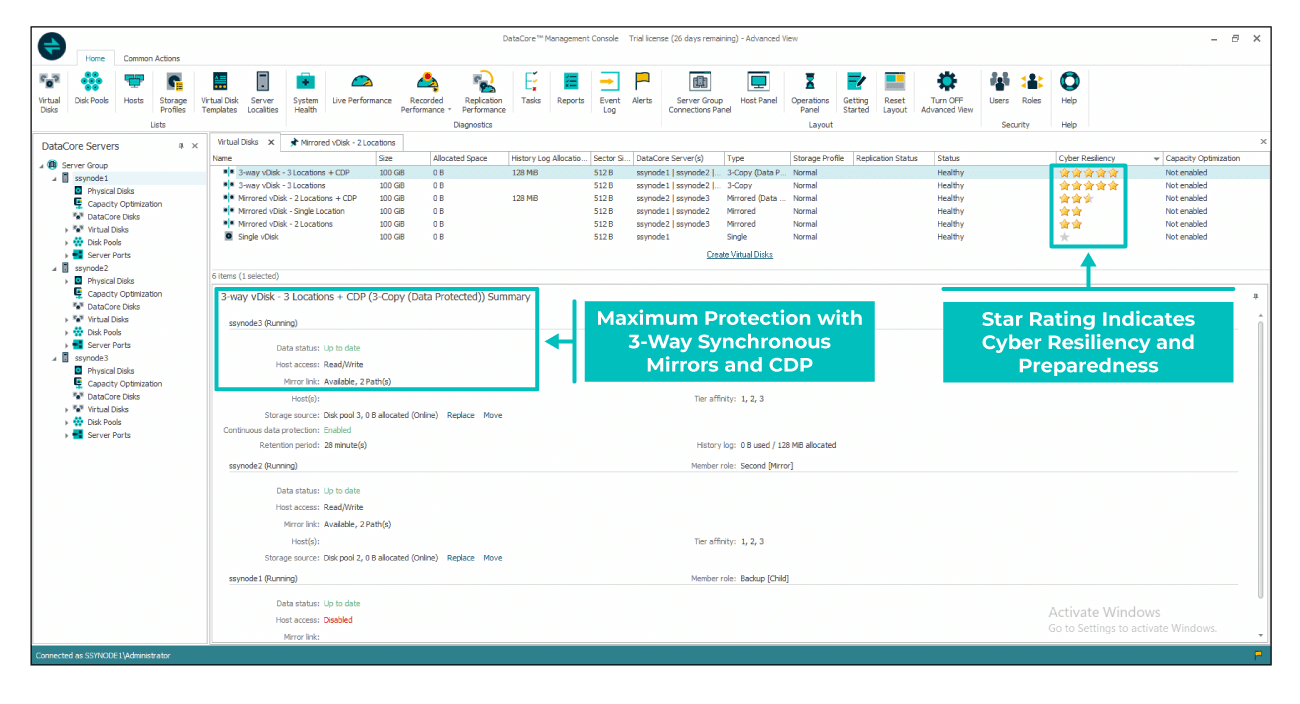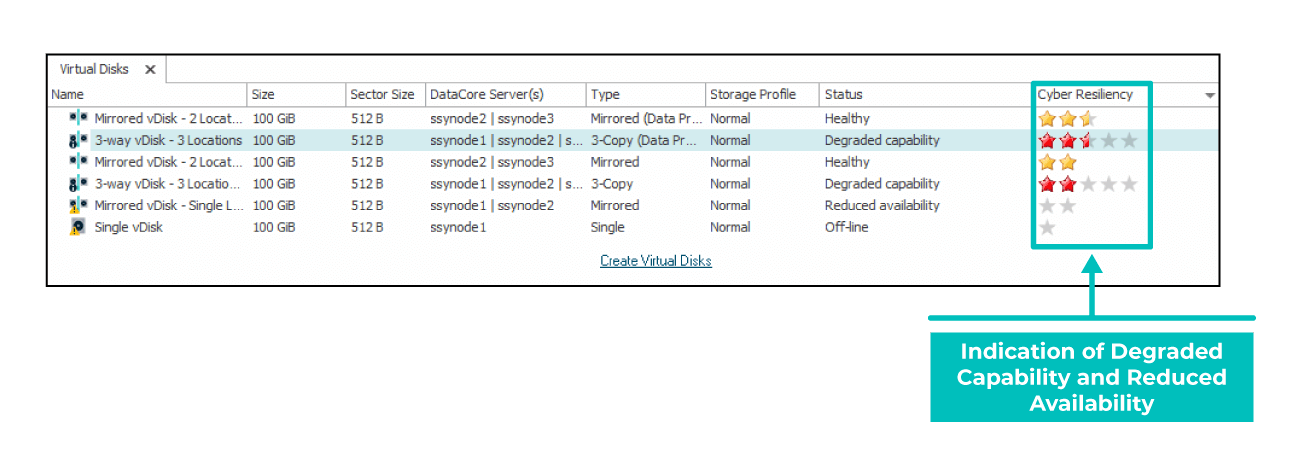Are Your Systems Prepared for the Next Crisis—Be It Cyber or Otherwise?
Cyberattacks often strike without warning and can have devastating consequences. But it’s not just about cyber threats—in a world where disruptions and failures are inevitable, the question isn’t whether your systems are secure, but how quickly they can recover when the worst happens. Relying solely on preventive measures like firewalls and intrusion detection systems is no longer enough. Modern cyber preparedness demands resilience, ensuring that your data can withstand an attack and any kind of outage—whether due to natural hazards, hardware failures, or other disruptions—and recover swiftly.
While focusing on securing networks and applications, one shouldn’t overlook the storage layer, where critical data resides. Building resilience into storage systems is essential to ensure that your organization’s data remains intact and recoverable, making it an integral component of any effective cyber strategy.
When a disruptive event inevitably occurs, will your data infrastructure have the resilience to bounce back swiftly, or will it falter and buckle under the pressure?
Building Storage Systems to Withstand Any Disruption
A solid foundation of data protection begins with implementing resilient storage systems that can endure both everyday issues and large-scale threats.
Synchronous mirroring is a critical concept for data redundancy and high availability. Organizations often rely on two copies of data to ensure fault tolerance, but a setup with three copies is even more robust, effectively eliminating any single point of failure even when one of the systems fails. With mechanisms like automatic failover, resynchronization, and failback built into these systems, organizations can maintain seamless operations despite any disruptions.
Typically, mirrors are configured within the same site (in separate fault domains), across different locations, or within metro clusters that span specific distances. For longer distances and geo-redundancy, asynchronous replication ensures remote site recovery, a strategy designed for large-scale outages where the primary site might be compromised. This layered approach allows protection against both localized failures and major site-wide disasters.
In addition to replication, it is also advisable to employ point-in-time restore options, such as backups, snapshots, and Continuous Data Protection (CDP). CDP allows you to rewind and restore data from specific moments in time, providing an extra layer of defense against data corruption or ransomware attacks.
With these varied configurations—whether through local mirrors, remote replication, or CDP—organizations can build a multi-tiered strategy that not only protects their data but ensures continuity even under extreme conditions. Ensuring these configurations are optimized is critical for reducing downtime, minimizing data loss, and maintaining business operations.
Cyber Resiliency Rating: A Standard for Measuring Preparedness
Once these data protection measures are in place, it is important to assess just how well they can stand up to evolving threats and disruptions. This is where the concept of a Cyber Resiliency Rating becomes invaluable, helping organizations quantify the resilience of their storage infrastructure and proactively identify areas for improvement.
Introduced in DataCore SANsymphony 10.0 PSP19, the Cyber Resiliency Rating dynamically tracks key factors such as server locality, system health, and data protection configurations, providing an easy-to-read star rating on the management console. This rating system is designed to give IT teams a quick visual reference of how resilient their storage configurations are and where improvements may be needed to bolster protection against potential threats and disruptions.
The star rating is assigned based on various storage configurations as outlined below:
| Data Protection Configuration | Cyber Resiliency Rating |
|---|---|
| Single virtual disk | |
| Dual virtual disks in one location | |
| Two synchronously mirrored disks in the same location | |
| Two synchronously mirrored disks in the same location + asynchronous replication and/or CDP | |
| Two synchronously mirrored disks across two locations | |
| Two synchronously mirrored disks across two locations + asynchronous replication and/or CDP | |
| Three synchronously mirrored disks in one location | |
| Three synchronously mirrored disks in one location + asynchronous replication and/or CDP | |
| Three synchronously mirrored disks across two locations | |
| Three synchronously mirrored disks across two locations + asynchronous replication and/or CDP | |
| Three synchronously mirrored disks across three locations | |
| Three synchronously mirrored disks across three locations + asynchronous replication and/or CDP |
This star rating system provides a clear, at-a-glance evaluation of how resilient your data protection strategy is at the storage level. Whether you have a single disk or a three-way mirrored system with multiple layers of protection across multiple locations, fault domains, or fire zones, and have additional protection with remote copies and CDP, the Cyber Resiliency Rating helps assess whether your organization’s storage is ready to withstand disruptive events.
SANsymphony Management Console Displaying Cyber Resiliency Rating
What Happens in Case of a Failure? Indication of Degraded Capability
In the event of a failure, the Cyber Resiliency Rating system is designed to immediately reflect the impact on your storage resilience. The star rating will turn red, signifying a critical drop in protection and availability—an indication of degraded capability. This demotion helps IT teams quickly identify and prioritize the affected areas that require immediate attention. Once the issue has been resolved and the storage protection configuration is restored, the star rating will return to its original level and change color to gold, indicating that the infrastructure is once again fully resilient and ready to face potential threats. This dynamic feedback ensures ongoing monitoring and swift responses to maintain optimal cyber resilience.
Indication of Degraded Capability and Reduced Availability
ENHANCE YOUR CYBER RESILIENCE TODAY
Indication of Reduced Availability and Potential for Improvement
In addition to monitoring failures, the Cyber Resiliency Rating also highlights opportunities for improvement in your current storage configuration. If your system has available resources, such as additional disks or multiple locations that could enhance your data protection but are not yet fully leveraged, the rating will display gray stars. These gray stars serve as a visual indication that there is potential to increase resilience by optimizing your configuration. For example, if your system could benefit from additional mirroring or replication across locations but isn’t currently set up for it, the gray stars will show that these improvements are possible. By not taking advantage of these options, your infrastructure remains at a reduced availability level, leaving it more vulnerable to disruptions. This proactive feedback allows organizations to make informed decisions about strengthening their cyber resilience and ensuring maximum uptime and protection against threats.
This flexible feature can be toggled on and off at any time, allowing you to selectively enable the resiliency rating for your most mission-critical workloads, ensuring focus where it is needed most.
Reach out to us to discover more about the Cyber Resiliency Rating and how to design a strong, cyber-resilient storage infrastructure to safeguard your data. Our team of experts is ready to help you optimize your systems for maximum protection and ensure seamless business continuity, no matter what threats arise.

